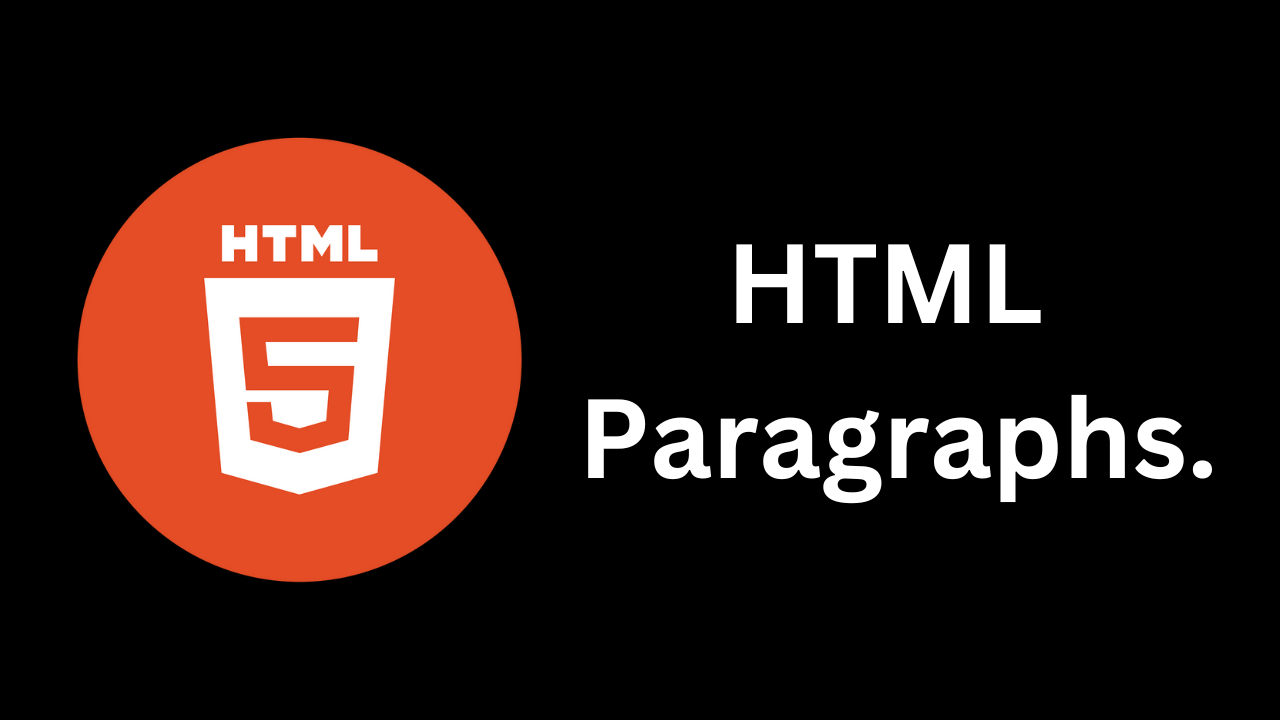HTML Paragraphs
 Shivani Patel
Shivani Patel
Mastering HTML Paragraphs.
HTML (HyperText Markup Language) is fundamental to creating structured web content. Among its many elements, paragraphs play a key role in organizing and presenting textual information clearly. Understanding how to use HTML paragraphs effectively is crucial for creating readable and accessible web pages. In this blog, we’ll explore the purpose of HTML paragraphs, best practices for their use, and practical examples to illustrate their application.
What Are HTML Paragraphs?
In HTML, paragraphs are defined using the <p> tag. This element is used to group related sentences and organize content into distinct blocks. Each paragraph is separated from others by vertical spacing, which helps to visually distinguish different sections of text.
Syntax and Basic Usage
The basic syntax for an HTML paragraph is straightforward. Here’s how you define a simple paragraph:
<p>This is a paragraph of text in HTML. It is enclosed within <p> tags.</p>
Key Characteristics of HTML Paragraphs
Automatic Spacing:
- Browsers automatically add vertical margins above and below
<p>elements. This spacing ensures that paragraphs are visually separated.
- Browsers automatically add vertical margins above and below
Text Wrapping:
- Text within a
<p>tag will wrap automatically based on the width of the containing element. This ensures that your content is responsive and adjusts to different screen sizes.
- Text within a
Block-Level Element:
- The
<p>tag is a block-level element, meaning it occupies the full width of its container and starts on a new line.
- The
Best Practices for Using HTML Paragraphs
Organize Content Logically:
- Use paragraphs to separate different ideas or sections within your content. This makes it easier for readers to follow and understand the information.
Avoid Long Paragraphs:
- Break up lengthy paragraphs into shorter ones. This improves readability and prevents overwhelming readers with large blocks of text.
Use Semantic HTML:
- Ensure that paragraphs are used appropriately within the overall structure of your HTML. For example, do not place block-level elements like headings or lists directly inside a
<p>tag.
- Ensure that paragraphs are used appropriately within the overall structure of your HTML. For example, do not place block-level elements like headings or lists directly inside a
Examples of HTML Paragraphs
Basic Paragraph Example:
<p>HTML (HyperText Markup Language) is the standard markup language used to create web pages. It describes the structure of web pages using a variety of tags and attributes.</p>Multiple Paragraphs Example:
<p>HTML is the foundation of web development. It provides the basic structure for web pages, including text, images, and links.</p> <p>With HTML, you can define headings, paragraphs, lists, and other elements to organize content effectively. By combining HTML with CSS and JavaScript, you can create interactive and visually appealing websites.</p>Paragraphs with Inline Elements Example:
<p>HTML allows you to include <a href="https://www.example.com">links</a> and <strong>formatted text</strong> within paragraphs. This enhances the content and provides additional functionality.</p>Responsive Design Example:
<div style="width: 50%;"> <p>This paragraph is inside a container with a width of 50%. Notice how the text wraps based on the container’s width, which helps in maintaining readability across different devices.</p> </div>Long Paragraph Example (Broken into Shorter Paragraphs):
<p>Web development involves various technologies and practices. HTML provides the basic structure for web pages, while CSS is used to style them. JavaScript adds interactivity and dynamic features.</p> <p>For a well-rounded web development skill set, it’s essential to understand how these technologies work together. Start by mastering HTML, then move on to CSS for styling, and finally learn JavaScript for interactivity.</p>
Common Mistakes to Avoid
Nesting Block-Level Elements:
Avoid placing block-level elements like headings or lists directly inside a
<p>tag. Instead, structure your content with appropriate HTML elements.Incorrect:
<p><h2>Heading Inside Paragraph</h2></p>Correct:
<h2>Heading Outside Paragraph</h2> <p>Paragraph content here...</p>
Overusing Paragraphs:
- Don’t create a new paragraph for every single sentence. Use paragraphs to group related content together.
Conclusion
HTML paragraphs are essential for structuring and presenting textual content on web pages. By using the <p> tag effectively, you can create well-organized, readable, and accessible content. Remember to break up long paragraphs, avoid incorrect nesting of elements, and use semantic HTML to ensure a clear and engaging user experience.
Subscribe to my newsletter
Read articles from Shivani Patel directly inside your inbox. Subscribe to the newsletter, and don't miss out.
Written by
